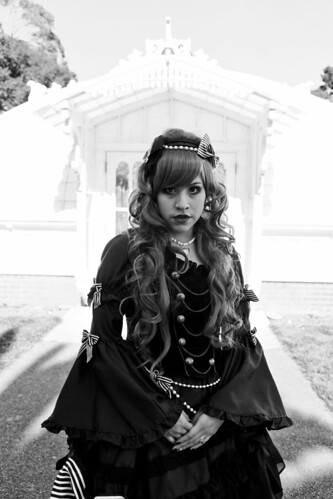
Written by Erin Browner Photo by Melissa Burman
A multi-layered dress of dark silk ruffles and satin bows bury Andi Hernandez’s petite body. Voluminous, luscious locks of light auburn hair coil down her velvety corset. Tucked under her corset is a shiny blouse, complete with long, wavy sleeves. Raven-black billowy petticoats gather at her waist and form a bell-shape silhouette. The sharp heels of her knee-high, military-style stiletto boots snap on pavement.
The day Hernandez discovered Lolita fashion, millions of young women were doing the same thing; they sat at home and flipped through their precious fashion magazines. Flashes of lingerie and naked women have been the apple of the media’s eye for the last century. Sexism is prominent in the media largely because most of the media (and most of the world) is run by men. What Hernandez, like most other Lolitas, sought was an alternative.
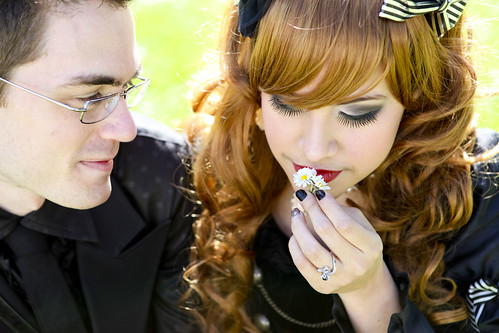
At first sight, dainty Hernandez looks eccentric and intimidating. Then she smiles; the whites of her teeth outshine the glow of pearls threaded in her hair and around her waist. As Hernandez begins to talk about one of the most important moments of her life, her eyes radiate a sweet glow. She then holds out her hand to display a dazzling onyx jewel on her ring finger and her smile grows ten times bigger.
The first time Hernandez met Elliot Morrow, they sang karaoke together at a meet up in San Jose. The two were practically strangers when they sang “1000 Words” by Jade Sweetbox, a track from the Final Fantasy video game soundtrack. Now the song holds a special spot on their wedding playlist. The lovers dated for three years before they eloped on November 11, 2011. It only seems fitting that their wedding ceremony reflected the Japanese-inspired fashion that brought them together.
Flash back five years to a curious Hernandez cruising through magazines in high school. She remembers squealing when she stumbled upon a cute style while browsing Japanese fashion articles. Images of modernized Victorian dresses struck Hernandez with love at first sight. She’s been a follower of the Lolita fashion trend ever since.
“It’s definitely a world primarily made up of women who dress for women and for themselves,” says Angie Lyons, San Francisco State University student and local Lolita. Historical research fuels her interest in this highly antique fashion trend. Not only because of the origin of the style, but because of the influence of Victorian times.
Ask any Lolita to define her style and she’s bound to include “Victorian,” “cute,” “elegant,” or “innocent.” Lyons describes Lolita style as “princess clothes for the modern maiden,” which is pretty spot on. Essentially, these ladies are infatuated with the idea of pursuing the secret wish many women have – the desire to escape from patriarchal expectations to dress slutty. They want to be a princess, go for tea and receive an offer of marriage from a prince in wonderland.
Maybe Lolitas don’t necessarily marry Prince Charming, but according to a Canadian documentary, some refer to their world as Alice’s rabbit hole. In the documentary, the fashion’s followers say the common Lolita wants to live in a utopia where “creativity and expression are free of modern society’s expectations.” Once a Lolita gains the confidence to take that freedom, the world becomes Wonderland.
But there’s more to Lolita than dressing in princess dresses, petticoats, and corsets. Lolitas have rules, and the first rule is to minimize the amount of shown skin. The innocent style bloomed from the over sexualization of Japanese women. During a rise of prostitution in Japan, women sought a form of expression to rebel against society’s constant sexualization. Lolitas began to dress in innocent, modest clothing to counter the condescending perception of their race.
Not all Lolitas identify with the sociological conception of the fashion. Many associate Elegant Gothic Lolita with a genre of Japanese music. In the 1980s, the Japanese music industry latched on to EGL’s visual form of expression and incorporated Lolita fashion into their musical performances. The use of voluptuous hair, flamboyant makeup, and Victorian-inspired apparel among musicians is known as Visual Kei. In the past twenty years, the Lolita trend stretched worldwide with Visual Kei bands, turning from female rebellion into a form of individuality for all genders and races.
A well-known Visual Kei band is MALICE MIZER. It combines a gothic version of Lolita while still maintaining a sweet, Victorian performance. Members of MALICE MIZER are often dressed in black from head to toe, with pale makeup and shadowy eyes. Its use of dripping blood in music videos, heavy drumming, and extensive guitar solos are similar to American metal bands.
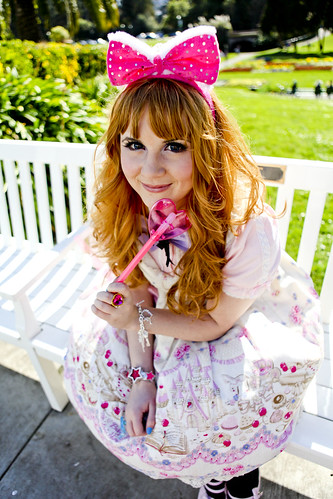
But the singer of MALICE MIZER won’t give a ghoulish screech like the vocalists of Necrophagist or Megadeth. MALICE MIZER’s vocals are much more musical and prominent, comparative to Gerard Way of My Chemical Romance. MALICE MIZER’s insertion of sweet French lyrics and playful keyboard chords produce a taste of Versailles, which is a core vision of Lolita for its Victorian-esque dressing gowns and attention to detail. The band’s balance of sour and sweet is similar to the huge sub-category of Lolita fashion, Gothic Lolita.
Opposite of gothic on the Lolita spectrum is Sweet Lolita. Erica Brown of Concord is a candied example of Sweet Lolita. A pink, sparkly bow sits on top of bundles of blond, curly hair. Each time her eyelashes blink, her straight-across bangs are flicked away from her doll-like eyes. Pastel shades of every color embody her cupcake-shaped dress. Ivory lace bloomers peek out from under her skirt. Her piggy pink shoes are bulkier versions of Mary Janes, with three times as many bows. Sometimes, the Sweet Lolitas wear candy in their hair (or wigs). Brown carries a heart-shaped wand, that of a child’s toy. She collects plastic children’s jewelry. She acquired heart rings and star bracelets in random places, some at the child’s makeup section of Target, others at Dollar Stores.
The Sweet Lolita’s child-like visage is commonly misunderstood, just as Gothic Lolita’s image is confused as a costume. With a childish appearance and the name “Lolita,” people foreign to the style assume the fashion is a fetish. This is one of the most common misconceptions of the Lolita trend. Every Lolita is determined to explain her fashion when it is confused with the sexually perverted novel, Lolita, by Russian author Vladimir Nabokov. Nabokov’s version of Lolita is a 12-year-old girl involved in incestuous, sexual acts with an older man. His book did not influence Lolita fashion, the literature is not connected to Japan whatsoever.
Lyons explains the only similarity between the two concepts is the name itself, “It’s unfortunate,” she says as she fiddles with the Hello Kitty keychain attached to her cell phone.
“I think it’s very strange when people equate Lolita the fashion with Lolita the book because pedophilia is all about wanting [sexual relations with] children, not about wanting women who dress like children,” says Lyons.
There is a gray line drawing the difference between Lolita and Harajuku fashions. Harajuku is the Japanese “style” Gwen Stefani popularized with her solo album in 2004– the same album that introduced Lyons to Japanese fashion. Most people outside of Japan quickly stamp the label “Harajuku” on any Japanese-inspired fashion. After Stefani released Love. Angel. Music. Baby., Japan’s Harajuku district became a capitol of fashion, and primary reference of Japanese fashion for the United States.
It’s true that the Lolita fashion began in the Harajuku district in Tokyo, but “Harajuku” is not a fashion trend– it is the physical area in which fashion trends are discovered and worn. A San Franciscan would not say she dressed in the Mission fashion to get coffee with friends. Imagine if Stefani’s infamous track, “Harajuku Girls,” was translated to San Franciscans as “Mission Girls.” The imaginary lyrics are amusing, “Mission girls, you got the wicked style. I like the way that you are. I am your biggest fan.”
Stefani is a shining example of evolving fashion, as her punk rock roots led her to Japanese fashion trends. Clothing outlets like Hot Topic cater fashion similar to Lolita, such as steampunk, pin-up or retro– all incorporate full skirts and the flattering accents of a women’s body.
Instead of shopping at Americanized retail stores to put together an authentic Lolita-inspired look, most Americans shop at Japanese designer stores in SF which import the styles straight from Japan. Angelic Pretty downtown SF and Baby, The Stars Shine Bright (also known simply as “Baby”) in Japantown are the two most-shopped spots for Lolita clothing in San Francisco– and probably in the entire nation– according to Lyons, a former employee of Baby.
Lyons worked at Baby during their first ten months of business in SF. Lolitas scattered across the nation came to visit SF for Lolita shopping. Lyons remembers Lolitas crying of happiness, just because they finally had access to the fashion they were most passionate about.
Countless colors of lace and frill create a rainbow of poofy dresses hanging along the walls of SF’s Angelic Pretty. Tables sprinkled with accessories like flowery bracelets, rose headbands, lace veils, and pearl necklaces complete for attention. Long socks are printed with rose, ribbon, cat, cake, fairy, and star patterns. It’s easy to spend a pretty penny in Angelic Pretty and then walk out looking even prettier than the Hello Kitty credit card swiped for the purchase.
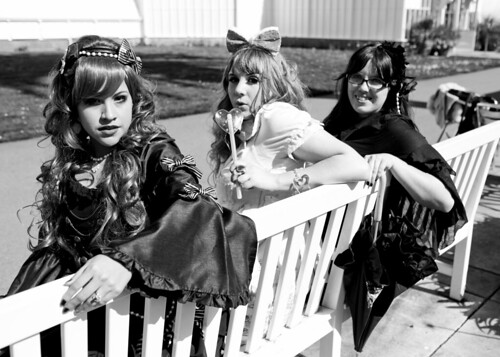
Although buying designer brands is utterly expensive, many shoppers believe the cost is worth the amount of detail and high quality that the Japanese designers provide. Dresses are trimmed with lace, doused with jewels and stitched with ribbons.
Hernandez and Brown agree that most Lolitas receive expensive brand items as gifts from family, or save up over time and splurge on one essential piece, then enhance it with fixings with their casual wear clothing. The cost of dressing Lolita in the United States is a huge obstacle, as the only retail options are high-end Japanese brands with jacked up prices caused by import fees.
Clothing is the meat of Lolita fashion, but outsiders of the trend often don’t know about the communities of Lolitas, and the intense friendships created through this community. Official meets ups occur at least once a month, when members of the Elegant Gothic Lolita Facebook group organize tea time and shopping in Japantown.
A few years ago one of Lyons’ friends, Jennifer Torrence, borrowed a Lolita dress and joined Lyons on a Lolita meet up. Dressing up in Lolita for the first time, Torrence said she just felt really cute– and maybe a little uncomfortable. Despite her trouble breathing, she found goodness in the experience. The highlight of her time at the Lolita lunch was walking in as a newcomer and immediately being accepted by the community, and even more importantly– she was respected.
“Being around all these women who were just having fun and upbeat and sweet and cheery,” said Torrence. “That itself was a really good experience.”
That was the first and last taste of the Lolita community Torrence took. But after only one meet up, she believes if people understood Lolita is not a sexualized fetish (again, the confusion with Lolita the novel), they might be more receptive and keen on trying to understand the fashion, and likely to participate. San Francisco is a society of cliques and small circles where individuals are afraid of branching out from their long-term friends, and trying to find groups with similar interests. Because San Francisco is such a diverse city, these types of opportunities are plentiful, and the likeliness of finding one other person with a similar interest is tenfold.
On the other hand, San Francisco is one of the top destinations in the world. A lot of outsiders peek in to the safe zone many unique people call “home.” With that in mind, clashes of culture wreck the streets every day, and tourists are quick with their cameras to capture the city’s freak show.
Some onlookers are too bashful to ask the Lolitas to pose a photo. “I prefer when they ask to take a picture instead of me turning around to a sudden flash,” says Hernandez. She pretends to look out for photographers, peeking over each shoulder of bows and frills, then laughs.
A Lolita outing can resemble Disneyland. Groups of visitors line up to shoot a photo of Cinderella or Sleeping Beauty. In this case, the princess is a Lolita, and she likes to throw up a peace sign. This sounds tiring, but Lolitas are too polite to say “no.” Manners and the utmost form of elegance is valued by Lolitas, just as it was in Victorian times. It’s crucial for Lolita to remain civilized if she wants to embody the true meaning of her fashion. Usually Lolitas naturally carry those characteristics, or aspire to act as ladylike as Marie Antoinette. If the occasion rose, Lolita too would offer cake to judgmental masses of the working class, just because she is that sweet.
Many times the Lolitas are judged for resembling nursery rhyme characters, such as Little Bo Peep. Once Shannon Sorensen wore her petticoat and full dress to Great America and “some jerk” shouted at her, “Hey, where are your sheep?” She shook it off gracefully– Lolita style. Sorensen and many Lolitas agree that when the situation allows, they are quick to politely teach someone the difference between Lolita fashion and character costumes.
Adorable characters are seeds of inspiration for Lolitas to build on; a single look branches from that seed to create her outfit. But Sorensen doesn’t incorporate inspiration from objects or characters like other Lolitas might. Everyday clothing can be transformed into pieces for her Lolita look.
An elegant bow is tied at the collar of Sorensen’s solid black blouse. Sorensen explains the top is not a brand piece. “This shirt just so happens to go with this skirt,” she says as she fiddles with the peasant sleeves of her top. It’s tucked in to a black corset which is layered on top of a black, silky skirt with cascading layers of frill.
Sorensen says her Gothic Lolita style is very personal. “It’s become so much of who I am, that it’s just me.”
In fact, before Sorensen discovered the Lolita community at a crucial moment in her life. The Lolita had a difficult time in high school while growing up in a suburb outside of Santa Cruz. Stress from classes, crumbling relationships, and the pressure to fit in became all too much for her. Sorensen attempted to take her life three times throughout her high school career. But as she sought professional help and invested in her personal interests, she found a hobby to occupy her morbid thoughts.
Sorensen considers herself a “loner Lolita.” When she says the phrase, there is a soft ease in her voice and she chuckles. The Lolita believes she has found a hobby to occupy her time while alone, and that’s enough for her. Like in girl world, the Lolita community constantly expects each participant to “do it right.” This means hiding skin, having the bell-shape silhouette, wearing the brands, going for tea, and keeping ahead of the trends. But that’s not an element of Lolita that Sorensen appreciates, it’s actually one she tries to avoid.
Sorensen participates in Lolita her own way, by learning to sew her own pieces, writing non-fiction about Lolita characters, and finding music associated with the trend. She is solely paving a path to self-discovery, which gives a deeper meaning to this Japanese fashion.


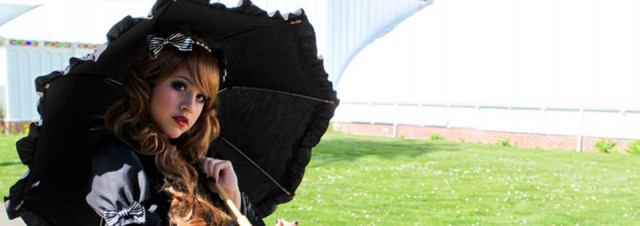

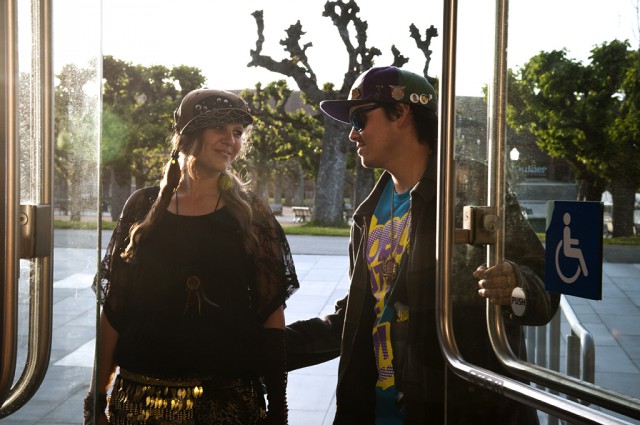

whoolo • May 24, 2016 at 7:42 pm
I really like your writing style, good information, regards for putting up :D. “Faith is a continuation of reason.” by William Adams.
Isreal Allabaugh • Feb 8, 2015 at 12:09 pm
U heeft bepaalde goede punten daar. Ik deed een zoekopdracht op het onderwerp en vond een goede aantal personen zal eens met uw blog.
アロマ·バスグッズ • Jul 24, 2014 at 7:17 pm
Hello there! I could have sworn I’ve visited this site before but after browsing through a few
of the posts I realized it’s new to me. Anyhow, I’m certainly pleased I stumbled upon it and I’ll be bookmarking it and checking
back often!
Johnny Rapid • Jun 29, 2013 at 10:39 am
Having read this I believed it was very enlightening. I appreciate you spending some time and effort to put this article together. I once again find myself personally spending a significant amount of time both reading and leaving comments. But so what, it was still worthwhile!